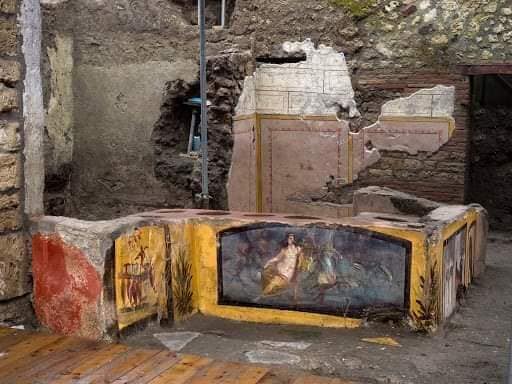this post was submitted on 13 Aug 2024
38 points (100.0% liked)
History Ruins
567 readers
49 users here now
What is a ruin? We’re running off of “You know it when you see it” at the moment. Ruins should be non-functioning structures of some age, or their function reduced to tourism and the like.
Generally speaking, specific items from a ruin should go to [email protected]
Illustrations of ruins (or their reconstructions) should go to [email protected]
Photos of ruins back when they were functioning should go to [email protected]
founded 5 months ago
MODERATORS
you are viewing a single comment's thread
view the rest of the comments
view the rest of the comments

I wonder if it's more to do with levels of literacy. Seems there was no (or little) free public schooling so I'd imagine most labourers, who might visit such a food stall, would be illiterate.
https://en.m.wikipedia.org/wiki/Education_in_ancient_Rome
https://en.m.wikipedia.org/wiki/Poverty_in_ancient_Rome
Of course, I'm happy to be corrected.
Roman society was largely agrarian, and rural areas would have had low literacy rates - averaged out over the Empire as a whole, you see numbers like 10%-20% of the population being literate. Modern research suggests, however, that urban areas (or, at least, the urban areas of Roman colonies) had very high literacy rates - some claiming as high as 70%. It's a VERY difficult thing to estimate precisely, and the definition of literacy varies, but the majority of people in cities would have had some level of basic literacy.
Very interesting, and some excellent points. I suppose we'd probably see that similar split in literacy levels between cities and rural areas in the last few hundred years in much of western Europe.
Anecdotally, living in Norfolk in the UK, growing up I can count at least 2 older people who were effectively illiterate.
Though another question would be is that 70% of everyone or were some people automatically not included in the count, like slaves?
Not that I expect worse literacy rates in urban slaves, but just another thing to consider. If anything, I'd guess they might have been even higher for slaves because IIRC urban slaves had more administrative and tutoring type jobs, in contrast from the mining and agricultural jobs outside of cities that might have looked more like the slavery we picture today when we hear that word.
It's already a very difficult thing to estimate at all, but I think it's meant as 70% of the entire town's population. There's evidence for literacy amongst slaves, low-class prostitutes, and manual laborers in Pompeii, so while slaves were probably less likely than, say, male citizens to be literate, I think averaged out by the rest of the population it's supposed to be around there.
That being said, 70% is definitely a high estimate. Most papers refuse to make a hard numerical estimate because of what a thorny topic it is.